Dr. James Lawler: Infectious disease expert gives Covid-19 facts and advice
Courtesy of Gabriella Paplilo (troop 81240)
Girl Scout Troop 81240 meets with Dr. James Lawler on Zoom to discuss the facts and myths of Covid-19.
January 15, 2021
The following is advice that Dr. James Lawler, edited from a recorded interview in December.
For this particular virus, there are a few things to keep in mind. Fortunately, Covid-19 does not appear to cause severe illness in young people, and, for the most part, children are spared. The most severe manifestations of the disease are fairly rare.
This does not exempt the transmission from the young to elderly people, thus increasing the death rate when cases increase among young people.
Unfortunately, children and teens can acquire the infection and spread the infection at a rate similar to adults. That is still controversial even among experts at this point, but I think that ultimately as we are able to analyze for information we are going to appreciate more and more that even young kids contribute to community transmission.
Young adults are an important factor in driving the transmission of the disease within the community and, with more safe behaviors, decreasing the spread.
Misconceptions on exposure and severity of the virus
We know from many other viral diseases, the more you are exposed to the virus, the more likely you are to have a severe, life-threatening effect.
In some virus transmissions of a small minority, one virus particle or one bacterium can be enough to cause infection and make you sick. But for the vast majority of transmissions, that’s not the case. You often need thousands, even millions of bacteria or virus particles to make you sick.
We don’t know what the infectious dose of most people is for the coronavirus but it most likely is in the many thousands of virus particles. That’s why a casual brush with somebody who may be sick and not wearing a mask probably, in part, holds a little risk. But if you stand by someone for hours, or you’re at an indoor party for hours on end, that is as much a longer period of time for exposure and transmission.
It may be a low concentration of the virus, but, because you spend so much time there, it can be a relatively high dosage and exposure.
The 6-foot rule is not magical. We, unfortunately, have put way too much emphasis on that rule because we know that aerosols can travel beyond 6 feet. However, moving around and standing in spaces where people have already spread their unmasked germs makes the 6 feet rule useless.
The best way to prevent the spread is to stay home, wear a mask when out, and avoid large gatherings or unmasked events.
The speed of the vaccine, is it a concern?
The vaccine has been approved under what’s called an emergency use authorization by the Food and Drug Administration (FDA). It’s good news that we have evidence that the vaccine works based on clinical trials, healthcare workers and politicians were some of the first to receive the vaccine in mid to late December.
Because nobody knew what the clinical trial was going to show, doctors and researchers set up huge trials with thousands of people to gather data on the effectiveness of the vaccine.
This large group of people was randomly split up: Some were to receive the trial vaccine while others were to receive a placebo (harmless substance with no physical effect). The researchers then watched them see how many people got sick and how many remained well.
As more people in the placebo group begin to get sick, and few people in the vaccine group, you start to tell the difference and observe the effectiveness of the vaccine.
They wait until they get a certain number, which is close to about 100. They will take that infected group to the data safety monitoring board, an independent group of doctors and scientists, and “break the code.”
Researchers saw a huge protective effect of about 90% which is impressive for a vaccine. They were expecting about 50-60%. That’s why the timeline for the vaccine was so up in the air.
They had enough of a difference between the vaccinated and unvaccinated group that they could say statistically it is such a small chance that this will be a random event.
Producing enough vaccines for everyone will take a while. I’m expecting it to be in the spring or summer that we give a large portion of the American people the vaccine.
Who will be receiving the vaccine
Many researchers have looked at vaccine prioritization. Ultimately it’s the U.S. Center for Disease Control and Prevention (CDC) that will make the official recommendations and distribute the vaccine they are advised by what’s called the advisory committee on immunization practice (ACIP), a group of doctors and scientists who are independent until the CDC tells them what to do next.
They (ACIP) have come to the conclusion that the first group of people to receive the vaccination will be health care workers because they are at great risk and almost constant exposure.
If our health care workers are sick and unable to take care of us, then everyone else suffers.
After that it’s a debate who comes second. Right now, the recommendation is the most vulnerable people. But more data will need to be seen based on how effective the vaccine is to those vulnerable people who are generally older. If it’s more effective in kids, then the best way to protect the community might actually be to vaccinate children, but it can take months to decide.
Different strands of Covid-19
Viruses mutate. Ribonucleic acid (RNA) virus, what the coronavirus is, are genetic sequences. RNA is much more unstable than Deoxyribonucleic acid (DNA) mutations.
There are a lot of different varieties and “flavors” of the virus that can be seen in terms of sequences.
So far we haven’t seen any mutant strands that are significantly more deadly; however, we are still learning and constantly getting new information. Overall, I would say right now there doesn’t appear to be too significant of a difference.
Working while asymptomatic
In many places such as hospitals, doctors’ offices, and essential businesses, people have no choice but to go to work and risk being exposed. These places are overwhelmed with the number of patients they treat daily, and now healthcare workers are suffering and getting sick because of the community they work in.
Hospitals are overwhelmed. They need every healthcare provider they can get. It’s sad. Unfortunately, the reason coronavirus is so out of control is because people refuse to make the right choices and do the things that are necessary to prevent spread. and then it’s the healthcare workers that are bearing the brunt of that, but that’s the way things are right now.
Doctors are suffering from an overwhelming case of numbers and hospitalizations. and they don’t have enough staff right now to take care of all the patients. They can’t afford to let anybody go right now who can potentially be on the job of saving a life.
In all honestly, there is not much I can say.
Wearing masks during high cardio exercise
It’s clear overall that wearing face masks is very safe. They have been worn for decades in healthcare. It is a matter of protecting others from your germs (covid or not). It is true they can get uncomfortable, especially when they get sweaty and damp while doing exercise.
It’s commonly argued that masks restrict breathing and are uncomfortable, but sometimes it’s just a function of the material that you choose to use as a mask. The material that is waterproof or water-wicking can help to not feel as uncomfortable. That doesn’t impede your work of breathing.
Professional and college athletes are practicing and playing sports while face masks are on and are able to tolerate it well. The super peak of professional level athletes may degrade slightly in performance just based on the mask.
However, for most high school level athletes, it’s not going to significantly impact your ability to train and play. It’s more mental than anything else.
Contact tracing and risk apps
If the app had widespread adoption, it would be similar to what South Korea has already done. They were able to handle the virus well while using the apps and monitoring to prevent the spread.
If the majority of US citizens put the app on their phone and agreed to register and update with symptoms or a positive test, then we could have more success with the apps.
If we could get a lot of people to use it, then it would be a helpful tool, but I’m not confident we could get widespread adoption in the United States. Unfortunately, in some counties maybe the app could help, but a nationwide app or alert would not be possible.
There are many countries and areas that are using similar tools to control the spread of the virus, not only in South Korea but Hong Kong, Vietnam, and many other neighboring countries. These countries use high tech approaches to develop proper contact tracing and slow the spread.
The different types of tests
It’s good to differentiate between the different types of tests being run and the sample that is being run on, which are two different things. So when you get the sample, whether it is nasal, swab, or saliva, it matters, but not nearly enough as the test machine you are using.
The deep brain biopsy swab is the best and most accurate, but we are learning, and it’s probably true that the internal nasal swab or even saliva gives you good enough direction with a high performance that detects the genetic sequence is still good enough.
A Polymerase Chain Reaction test or a PCR test is more effective at testing for Covid because most of the PCR tests are done by trusted machines inside of hospitals, rather than the rapid and quick tests done at testing sites. Unlike the brain biopsy swab, which detects protein fragments specific to the coronavirus, the PCR test is a molecular test that detects the genetic material (RNA) of the virus using a lab technique called the Polymerase Chain Reaction.
The problem is that the supply chain for those machines can only make so many at a time, and since they are the most effective and accurate in testing for Covid, they are in the highest demand. Nobody is able to get the cartridges that are used to load the machines or get the machines themselves for widespread use.
Surfaces
I think it’s true that the virus can be transmitted through inanimate objects and surfaces, but is particularly high touch and contact surfaces like doorknobs, handles, elevator buttons, etc.
In experimental environments, it’s proven that the virus can stay on surfaces for a long period of time (hours to days) but also remember that a high dose is needed to get sick.
When coming into contact with high touch surfaces, remember to not use a bare finger or hand. Use your sleeve or something else, an elbow, or wear a glove even.
There are many things you can do to prevent touching.
Be conscious of not touching your face when out in public. The risk of inanimate objects is fairly low. We’re learning, and I think we’re going to realize, that it’s far more important the aerosol component of the transmission.


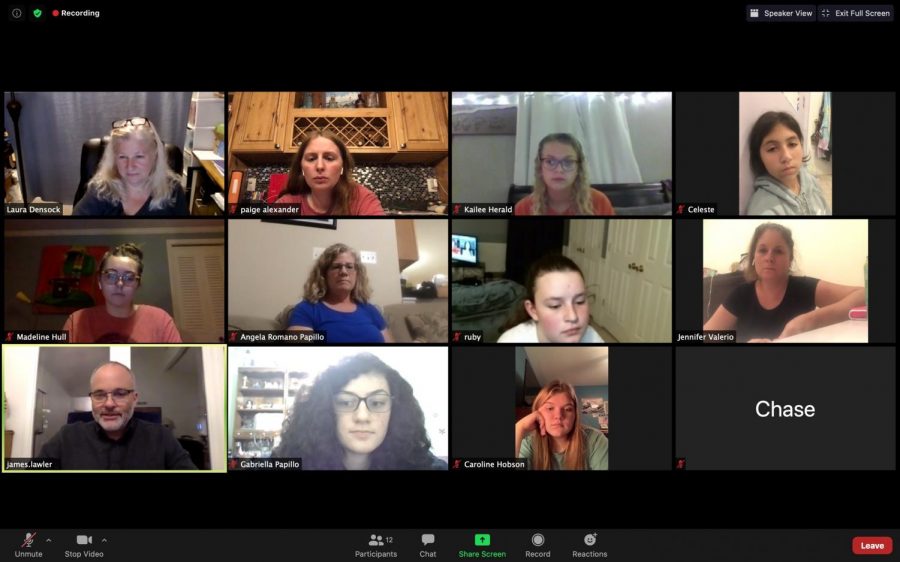
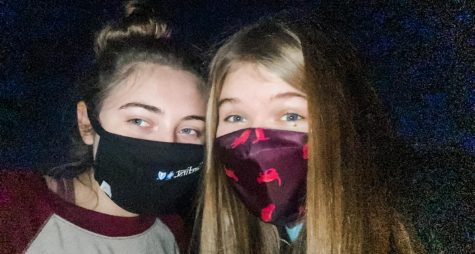

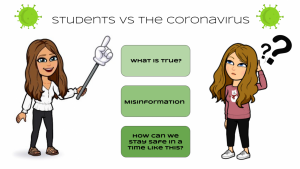


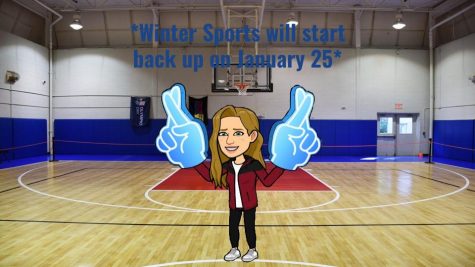

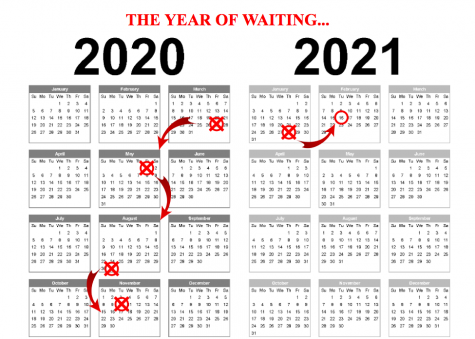


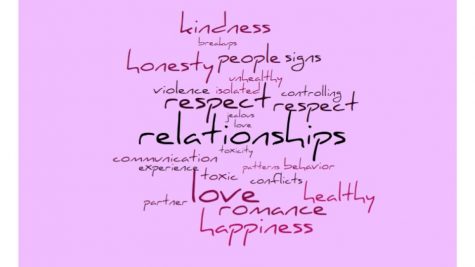


Thomas R Hull • Jan 15, 2021 at 9:38 am
Great information. Some day we will get back to normal. The more we practice safe Covid habits now the sooner that will happen!